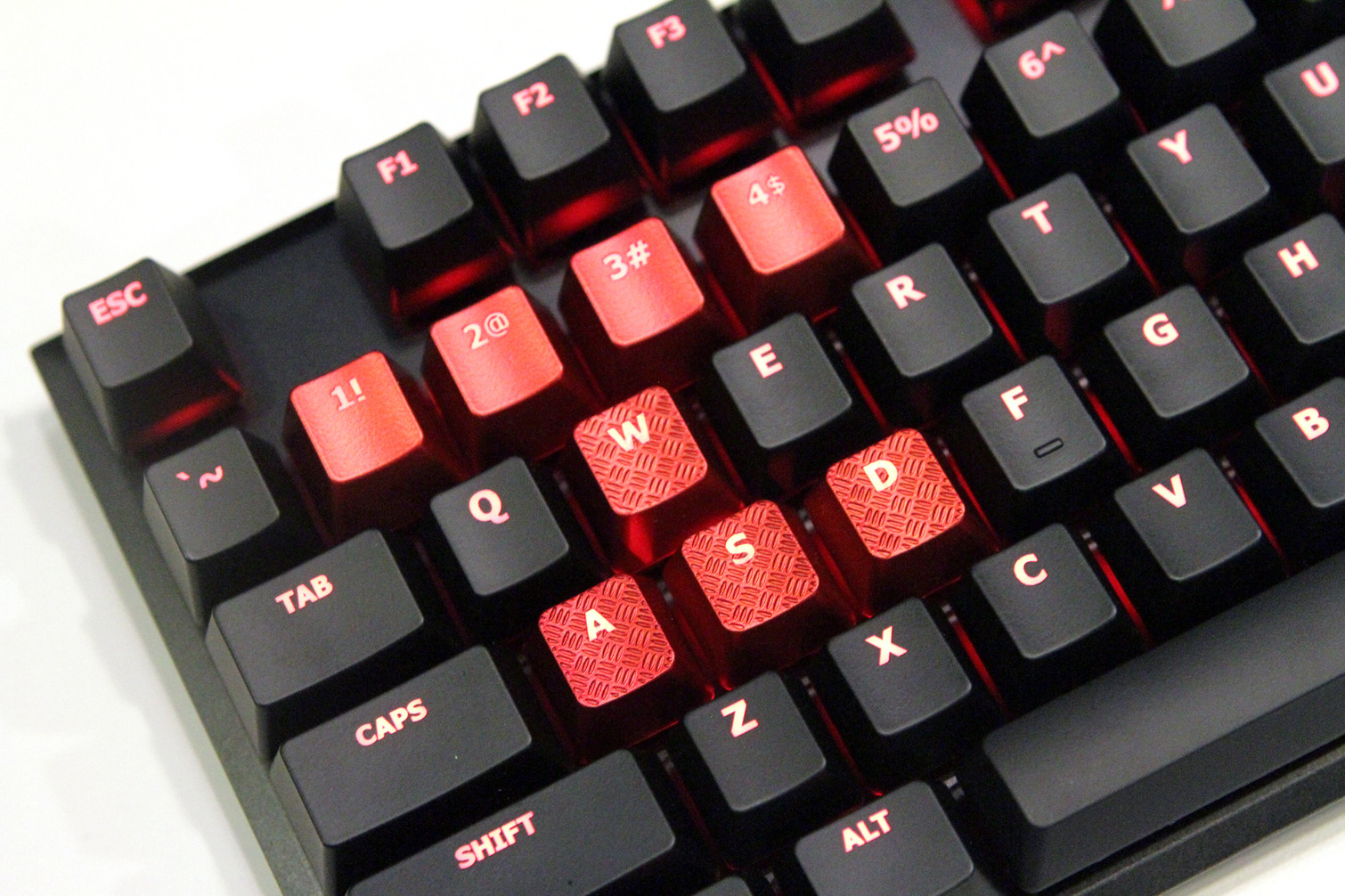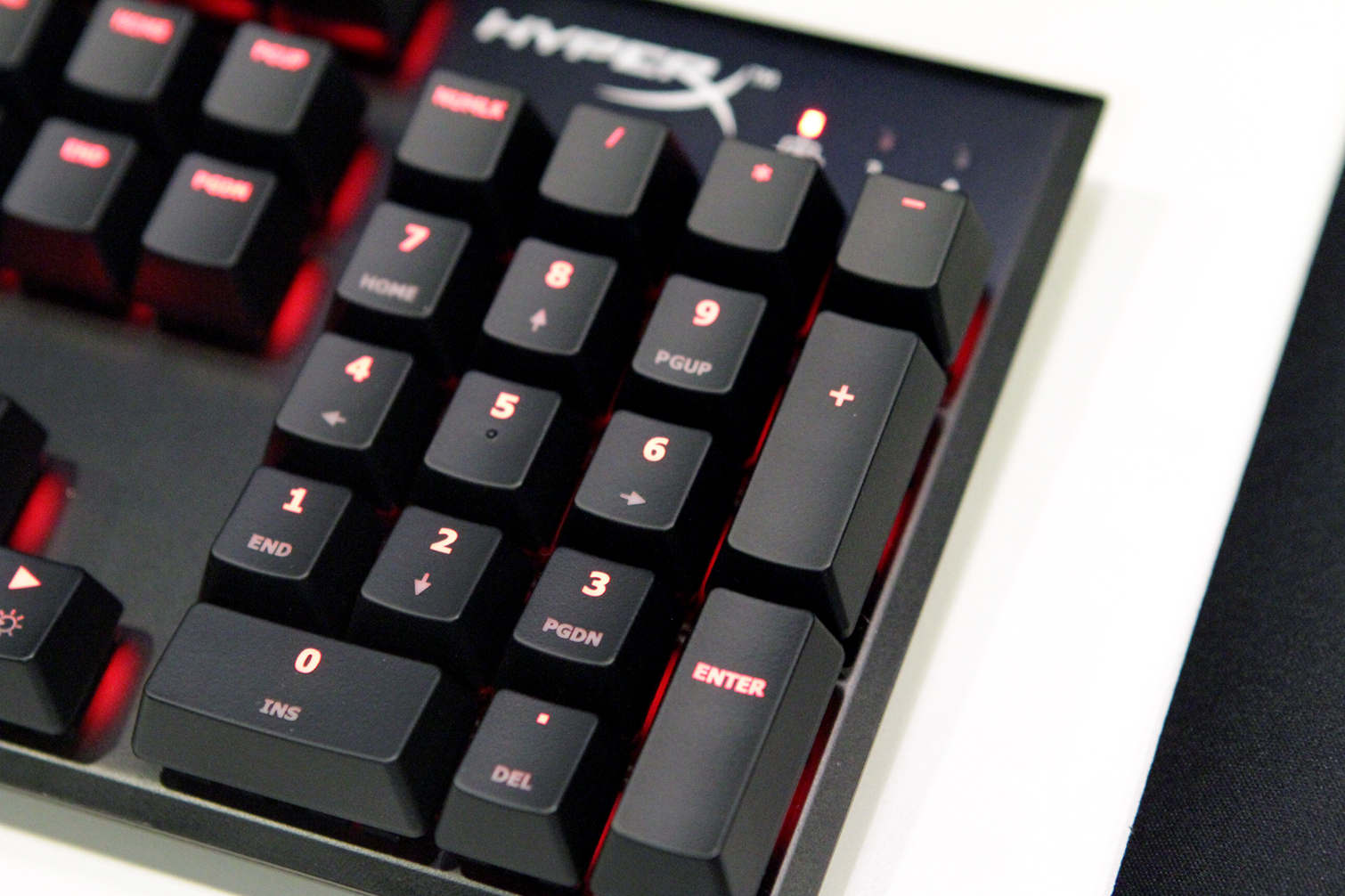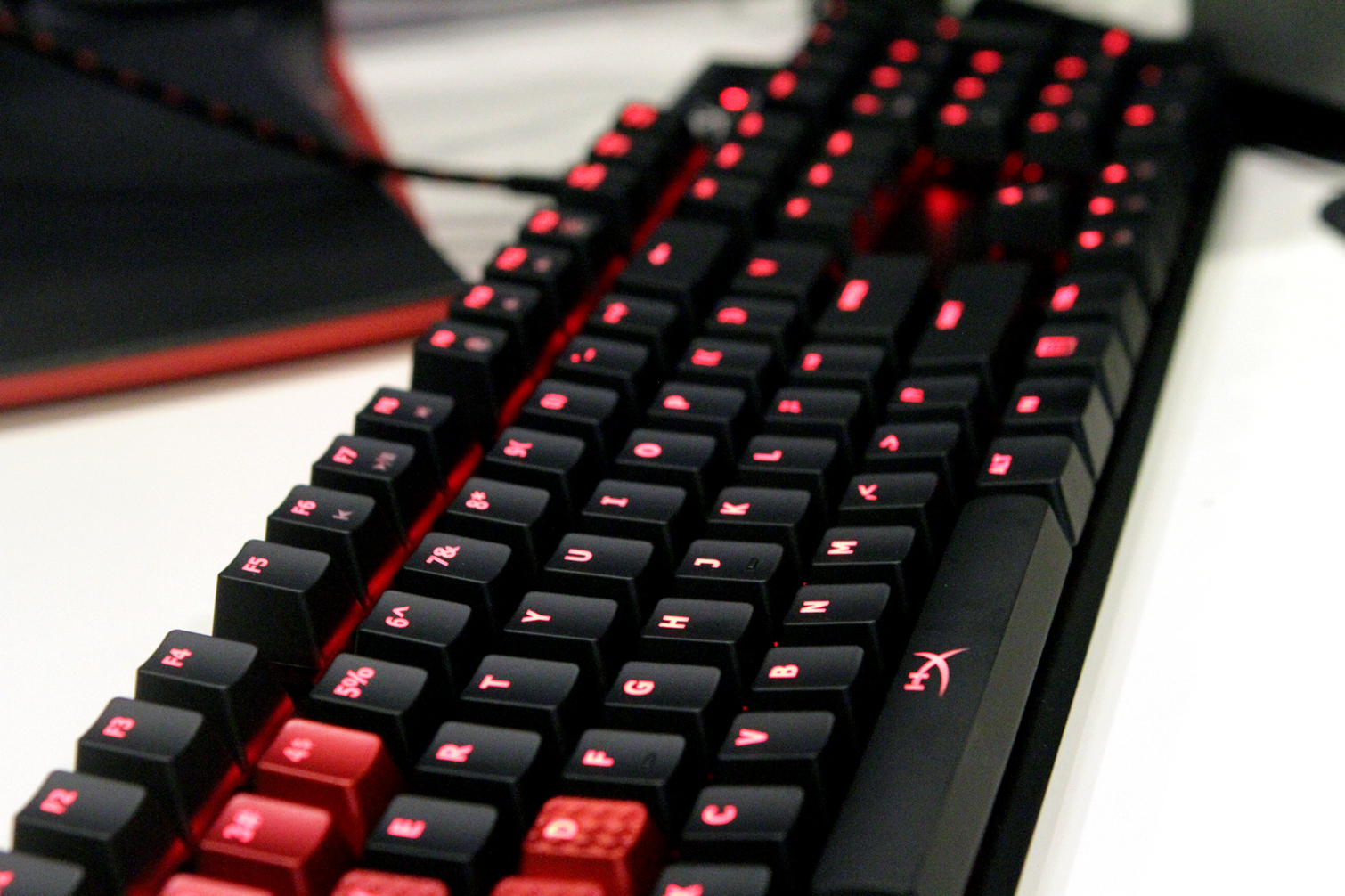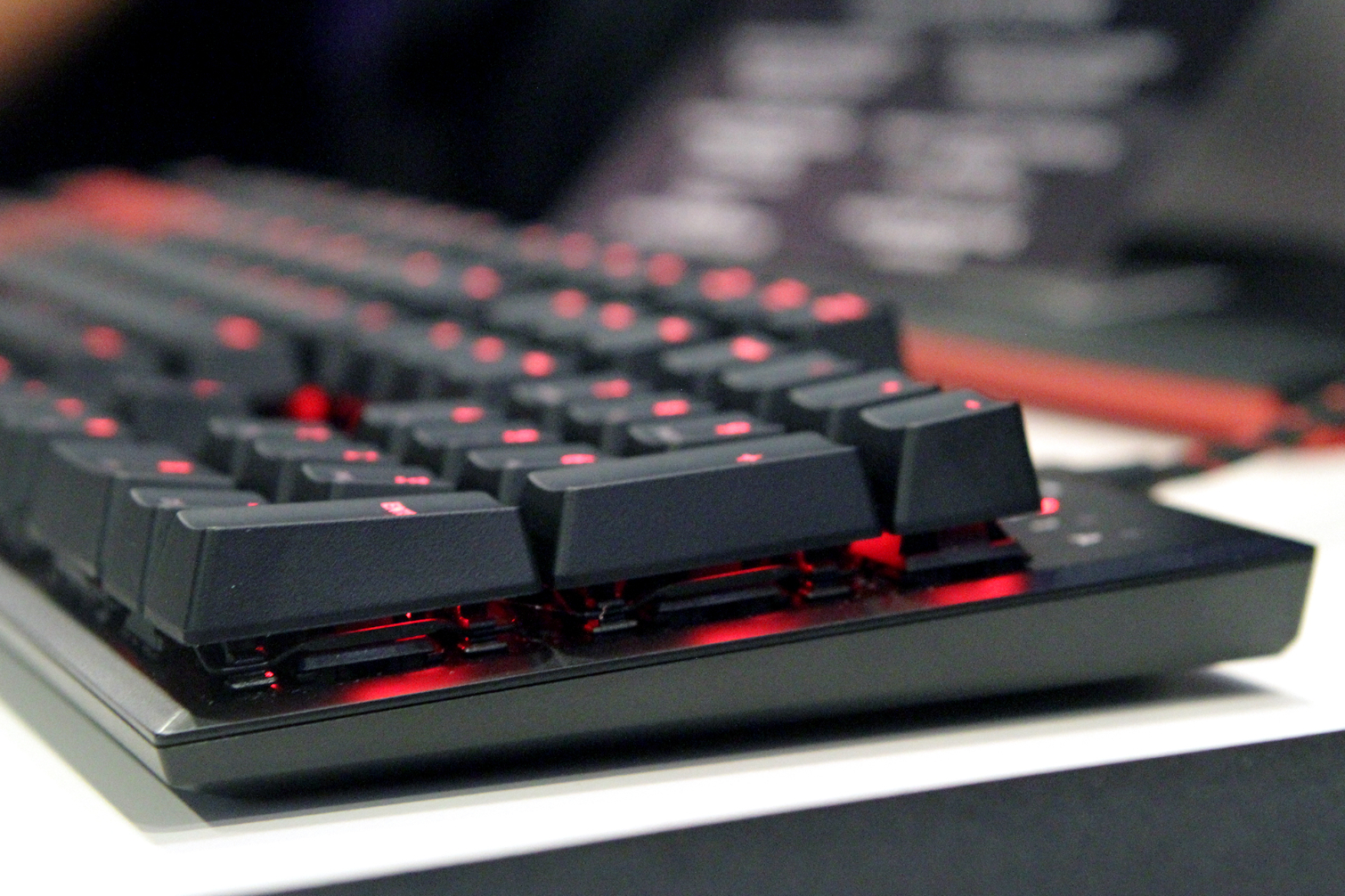Kingston Wants A Piece Of The Mechanical Keyboard Market (Update: HyperX Alloy FPS Now Available)
Update 2, 10/24/16, 6:40am PT: The HyperX Alloy FPS keyboard is now available from retailers, including Amazon and Newegg. As expected, the keyboard costs $100 MSRP, but we're a little surprised that street prices aren't any lower. We have not been provided every single specification, but it appears from the press materials that the features are unchanged from what we originally saw when we first encountered the HyperX Alloy FPS at IDF.
Saying that the keyboard market is saturated would be an understatement, but throngs of OEMs continue to dive in. The latest is Kingston, which will soon be launching its first-ever mechanical keyboard under its HyperX brand, the HyperX Alloy FPS. We spotted the company’s keyboard at its booth at IDF (hat tip to our own Chris Ramseyer for his eagle eye) and had a few minutes to put our hands on it and pepper the reps with questions.
Starting Simple
The HyperX Alloy FPS is a safe but solid and carefully-designed product. Kingston kept it fairly simple: It’s a slim device with plate-mounted switches, red backlighting and no software. The first run will feature Cherry MX Blue switches and Costar stabilizers, and the top panel is an aluminum alloy.
The only flashy aspect of the Alloy FPS is the handful of special key caps. All are ABS plastic, but the model on display had red textured key caps on the WASD cluster and some F keys. These are optional--the keyboard will ship with all-black keys and will offer the red ones as accessories, along with a key puller and carrying case.
The only other nod to gamer eye candy is the lighting modes you can employ. You can leave the red LEDs solid, or set them to breathe, “trigger” (where only the keys you tap light up), wave, ripple or custom. To set custom lighting, you press a two-key combination to “record,” tap all the keys you want to stay lit (say, the WASD cluster and spacebar), and hit the same two-key combo to save. The Alloy FPS can save a single custom profile on board.
There are also five brightness levels, and you can toggle between 6KRO and NKRO by pressing Fn+Delete (to turn on NKRO) and Fn+Insert (to toggle back to 6KRO).
Get Tom's Hardware's best news and in-depth reviews, straight to your inbox.







Details Great And Odd
To determine a keyboard’s quality, you have to look closely, and the more I examined the Alloy FPS, the more I liked what I saw (for the most part).
For example, Kingston positioned the key cap characters directly above the switch LEDs to ensure consistent and optimal lighting. There are some secondary characters that aren’t quite as bright, but that’s a common issue on any keyboard without through-stem LEDs.
I also found that the top panel has no open portions--it’s all one solid piece of metal. This is ideal because, as you’ll find on some other keyboards, openings in the top panel invite dust and dirt inside the keyboard chassis. The screws are hidden by the keys, so the top panel of the Alloy FPS looks seamless.
Further, the chassis is surprisingly slim--certainly one of the slimmer mechanical keyboards I’ve encountered--yet it’s nice and heavy, and is unlikely to slide around your desk.
One peculiar feature is the extra USB port. The Alloy FPS has a detachable 1.8m braided cable that uses a microUSB connection, but there’s a regular USB port, too. However, it’s not a passthrough port, as one would assume. Instead, it’s for charging only--there’s no data. So you can plug in your phone and charge it from the keyboard, which is neat, but almost all users will probably plug in a mouse, only to be frustrated when nothing happens. A Kingston rep explained that during testing, they found there was some interference between the two USB ports, and the solution was to make the second one for charging only.
The Start
Make no mistake, this isn’t a one-off product. Kingston is being conservative about the keyboard’s launch--it will be available only with the Cherry MX Blue switches at first--but the company is already plotting additional models. Expect Cherry MX Brown and Red versions of the Alloy FPS, as well as international versions with all three switch types.
Also, at some point, Kingston will likely build software for its nascent keyboard line to give users increased configuration options. We wouldn’t be the slightest bit surprised to see an RGB version shortly, too. Oddly, there appears to be no plan for a TKL version of the Alloy FPS at this time.
The MSRP will be about $100, but we expect street prices to be lower. We haven’t been able to spend significant time with the HyperX Alloy FPS, and we certainly were unable to take it apart and inspect its innards, but based on what we saw, this should be a reasonably attractive price for this keyboard.
Update, 8/19/16, 12:45pm PT: Kingston updated us with new and additional information. The keyboard will launch on August 29, first in Australia, China, Mexico, Russia and Ukraine. The U.S. launch will be sometime in Q4 2016. Pricing for the international launches is to be determined.
And although the MSRP for the U.S. version should be about $100, as we stated originally in the article, Kingston reached out to us to say that the street pricing we posted was not an official estimate. The street price will be determined later. Because it is not official information, we have removed our reference to the amount.
Seth Colaner previously served as News Director at Tom's Hardware. He covered technology news, focusing on keyboards, virtual reality, and wearables.
-
Lutfij If they went TKl, I'd be recommending this to my base! Good work entering Kingston, more stuff to confuse newcomers ;) but more stuff to drive prices down...?Reply -
80-watt Hamster I've been observing the mechanical keyboard trend with a skeptical eye so far, particularly since any models that appeal to me either cheap out in the switches or are WAY overpriced. Granted, $80 is twice what I've ever spent on a keyboard, but this one has the potential to change my mind. Not 100% sold on the textured WASD keys, though. Perhaps regular keys will be included with the kit?Reply -
Snipergod87 Reply18462734 said:I've been observing the mechanical keyboard trend with a skeptical eye so far, particularly since any models that appeal to me either cheap out in the switches or are WAY overpriced. Granted, $80 is twice what I've ever spent on a keyboard, but this one has the potential to change my mind. Not 100% sold on the textured WASD keys, though. Perhaps regular keys will be included with the kit?
Its in the article, regular keys are there the other ones are included but not preinstalled. -
80-watt Hamster Reply18463015 said:18462734 said:Not 100% sold on the textured WASD keys, though. Perhaps regular keys will be included with the kit?
Its in the article, regular keys are there the other ones are included but not preinstalled.
My reading comprehension must be slipping. I even went back and re-read it looking for a mention. Thanks for the point-out.
-
jonb2501 I'd say it's a good start. Give us an RGB option and widen the key switch choice and you'll really have something.Reply -
synphul Maybe it's yet to come but given all the recent articles like this one outlining the flood of brands getting into mechanical keyboards, price has still yet to come down. Corsair's strafe, logitech's g610, rosewill's rk9000v2, corsair's k70 etc all have mechanical boards most with backlighting around the $80-110 mark.Reply
The notion that the more competition there is the lower prices become doesn't always play out that way. In this case we're seeing newcomers adopting existing prices and more options similarly priced. -
scolaner Reply18774798 said:Maybe it's yet to come but given all the recent articles like this one outlining the flood of brands getting into mechanical keyboards, price has still yet to come down. Corsair's strafe, logitech's g610, rosewill's rk9000v2, corsair's k70 etc all have mechanical boards most with backlighting around the $80-110 mark.
The notion that the more competition there is the lower prices become doesn't always play out that way. In this case we're seeing newcomers adopting existing prices and more options similarly priced.
Really good point. I won't pretend to know the margins any of these companies are looking at per unit, but it's my understanding that the supply chain keeps prices at a certain level. I'm told that many (most) of the keyboards we see are made in the same handful of factories, and there are only so many different switch makers providing switches, so there's a lot of parity on that part of things. The differentiating aspects include lighting, software, etc., and those are costs that certainly vary to a degree from OEM to OEM.
TBH, I don't think most of these companies care too much to compete on price just yet. A lot of the newcomers, like Kingston, are relying on brand loyalty to an extent. It seems the logic is: I can make a competitive keyboard for $X.XX, and if people like my brand, they may as well buy my keyboard.
And frankly, there's a lot of following and not a lot of leading. Companies like Patriot and Kingston that have had success making other components/devices have to learn how to make a whole new Thing. Step one is making a Thing that is at least as good as the other Things on the market. Step two is finding ways to differentiate. Step three is finding ways to innovate.
So, until more of the bigger companies innovate, this will largely be a commodity market. But there are innovations...modular switches, optical switches, analog switches...that's interesting stuff that I hope catches on soon among the bigger OEMs.
(Sorry, didn't mean to write a whole article there. :P ) -
yoitsmegabe At this price point i'd stick with the glorious modular keyboard. Same price and color scheme but with any switch that fits the mx slots.Reply

